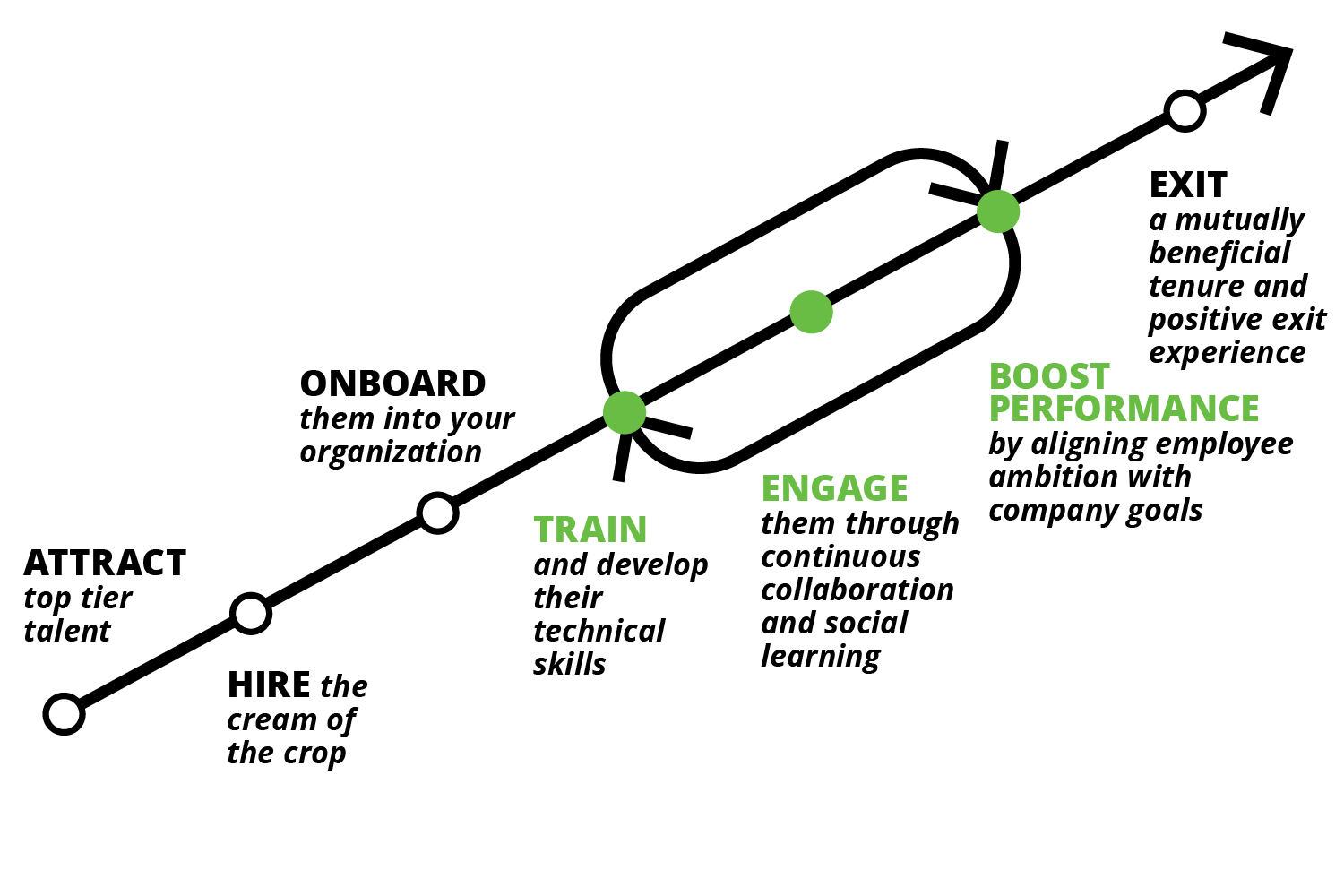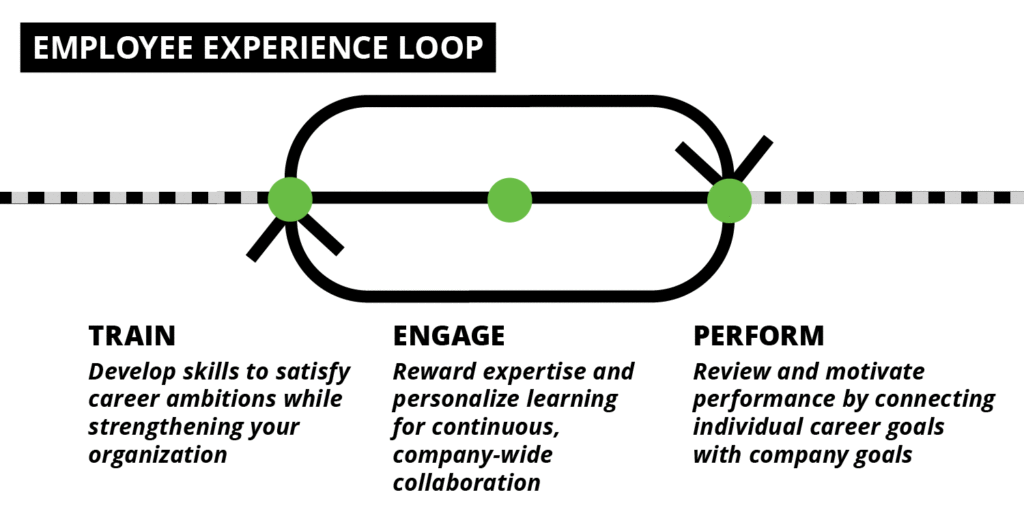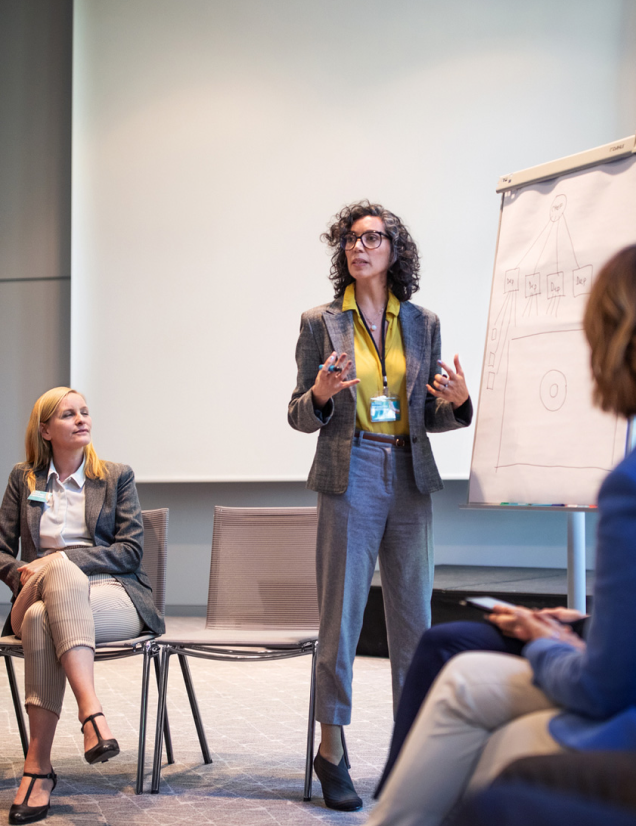What’s the difference between employee engagement and employee experience?
We previously stressed why investing in employee engagement and employee experience management should be the rule, not the exception, for every organization.
Investing in these two powerful drivers of workforce productivity, however, comes with an inherent challenge:
Monitoring, measurement and therefore, improvement, is difficult due to the inextricable link between employee experience and engagement.
How do you distinguish between the pair? And more importantly, what practical steps can leaders take to intentionally improve them?
In this post, you’ll learn about the key difference between employee experience and employee engagement, and why prioritizing the essential elements of employee experience—called talent experience—is key to high levels of performance and success in the workplace.
Table of contents:
What is employee experience? (And why most get it wrong)
Employee experience is a broad definition of an employee’s workplace experiences at different stages in the employee lifecycle.
Starting from job candidacy through to daily experiences, the employee lifecycle encompasses management, engagement, reimbursement, culture, rewards and much more.
Unveiling the overwhelming breadth of the term employee experience, some of the employee touchpoints and lifecycle stages that HR, L&D and management can influence to improve it are:
-
Applicant tracking
-
Recruitment
-
Performance management
-
Compensation and benefits
-
Skills gap analysis
-
Employee retention
-
Succession planning
-
Career management
Given the expansive (and consequently, borderline enigmatic) nature of the term employee experience—and the many potential avenues an organization can take to improve it—it’s natural to ask:
Which components of employee experience deliver long-term ROI for employee performance and engagement?
The answer lies in three core employee lifecycle stages:

-
Employee development: In addition to mandatory compliance training , are employees honing their craft or learning the skills they need to develop and progress in their careers? Are they acquiring skills that will benefit your organization in the future?
-
Enabling engagement and collaboration: Are employees able to collaborate effectively, even within a primarily virtual workspace? Can they access experts in the business that will have solutions to the problems they face? Can they learn what they need to, at the time of need, in the flow of work?
-
Performance and mentorship: Is your performance management process personalized to the needs of the individual? Are you providing continuous and timely feedback? Do employees understand how their day-to-day roles contribute to the organization’s overall business goals?
Addressing this powerful (but often overlooked) trifecta together is what we call talent experience:
Talent experience defines the most practical (and influential), everyday elements of employee experience that when improved, unlock exceptional employee engagement and organizational productivity.

Employee experience vs employee engagement: The difference
Now that we’ve defined employee experience (and why most approaches to improving it are inefficient), let’s clarify the difference between employee engagement and employee experience.
Employee engagement is not an event, a perk or an incentive program. It’s a psychological state that’s constantly shaped by an employee’s day-to-day work environment, culture and sense of purpose.
As confirmed by authorities like Gallup , employee engagement is unlocked when employees:
-
Have their social and emotional needs met; often derived from doing meaningful work
-
Feel like they are learning and progressing in their careers
-
Know what’s expected of them and have the materials they need
-
Trust their leaders and managers
-
Get along with their colleagues
Employee experience (or talent experience to be specific), on the other hand, creates the conditions that unlock high employee engagement. It sculpts an employee’s perception of their day-to-day work environment, culture and sense of purpose, which in turn influences their level of engagement.
This is because focusing on talent experience addresses the definitive (and high-ROI) stages of employee experience in which an employee spends most of their time in your organization:
-
Engaging and working with others
-
Performing tasks and being managed
-
Developing themselves through learning or career development to perform better
Therefore, a positive employee experience facilitates the feeling or state of being highly engaged, content and committed—which paves the way for an unrivaled, high-performance workplace.
Technology to improve your employee experience
At Totara, we built the Totara Talent Experience Platform (TXP) to help organizations use technology to improve the essential elements of employee experience listed above.
Comprising three solutions—that are powerful on their own, but transformational when used together—the TXP (trusted by organizations such as the USDA and Catalyst IT) enables you to build a better workplace experience, increase resilience and prosper in today’s fast-changing world. It unites:
1. Totara Learn – the learning management system (LMS) trusted by millions of learners and favored by companies worldwide to deliver transformational learning.
2. Totara Engage – the learning experience platform (LXP) built to engage, unite and upskill your workforce. Totara Engage empowers employees to simplify complex knowledge sharing with permanent workspaces, content playlists, a Microsoft Teams integration and more, to nurture deep collaboration and job-relevant learning.
3. Totara Perform – the performance management system with a central place to track employee feedback, monitor progress and assess competencies, allowing you to easily introduce frequent check-ins, establish critical goals, get 360-degree feedback, connect learning & development to performance management, and much more.
Together, these intuitive systems (that integrate with your current HCM and L&D tech) empower you with a Talent Experience Platform that improves every aspect of your employee-employer experience to unlock peak performance and boost agility in your organization.






